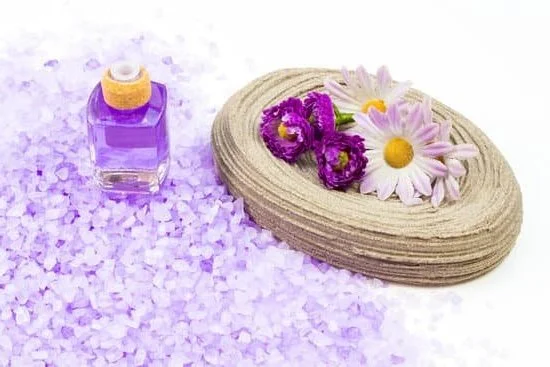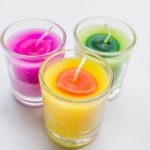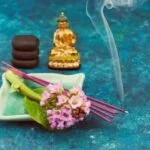Aromatherapy oils have gained popularity in recent years as people seek natural remedies for wellness and relaxation. With the growing interest in holistic approaches to health, many individuals are exploring the benefits of essential oils for various purposes, from stress relief to skin care. One common question that arises is whether it is safe to mix aromatherapy oils with baby oil.
Can you mix aromatherapy oils with baby oil? This article will explore the answer to this question and provide insights into the potential benefits and safety precautions of blending these two types of oils.
Aromatherapy oils, also known as essential oils, are concentrated liquids that are extracted from plants and used for their therapeutic properties. These oils are commonly used in aromatherapy, a practice that involves using natural plant extracts to promote health and well-being. Aromatherapy oils can be used in a variety of ways, including through inhalation, topical application, and even ingestion under the guidance of a qualified practitioner.
On the other hand, baby oil is a mineral oil derivative that is often used for skincare purposes, particularly in infant care. It is known for its mild and gentle properties, making it suitable for sensitive skin. Many parents use baby oil to moisturize their babies’ delicate skin or help soothe minor skin irritations.
Despite the differences between aromatherapy oils and baby oil, there is an interest in combining these two types of oils for various reasons. Throughout this article, we will delve into whether mixing aromatherapy oils with baby oil can be beneficial and safe for different uses such as relaxation and skincare.
What Is Aromatherapy Oil
Aromatherapy oils, also known as essential oils, are natural plant extracts that are used for various therapeutic and wellness purposes. These oils have gained popularity in recent years due to the growing interest in natural remedies for relaxation, stress relief, and overall well-being. Aromatherapy oils can be derived from a wide range of plants, including lavender, peppermint, eucalyptus, and chamomile.
Uses of Aromatherapy Oils
Aromatherapy oils are commonly used in aromatherapy practices to promote relaxation and alleviate stress. They are often applied through methods such as inhalation, topical application, or diffusion. Each essential oil has unique properties and benefits, making them suitable for various uses including massage therapy, skincare, and improving mood and mental clarity.
How Aromatherapy Oils Are Applied
Aromatherapy oils are typically applied through inhalation or topical use. Inhalation can include using a diffuser or adding a few drops of oil to a bowl of hot water, allowing the aroma to fill the air. For topical application, essential oils are often mixed with carrier oils such as coconut oil or almond oil before being applied to the skin. It is important to note that some essential oils should be diluted before direct skin contact to avoid irritation.
Overall, aromatherapy oils offer a holistic approach to wellness and have been used for centuries for their therapeutic properties. With their natural origins and versatile applications, aromatherapy oils have become a popular choice for those seeking natural remedies for relaxation and overall well-being.
What Is Baby Oil
Baby oil is a mineral oil marketed for use in babies. It is typically a clear, odorless oil made from petroleum-derived ingredients and is commonly used for baby care due to its gentle and moisturizing properties. Baby oil is often used to help soothe and protect delicate skin, particularly after bathing. It can also be used as a massage oil or to help remove cradle cap.
Uses of Baby Oil
Baby oil is primarily used to moisturize and protect the skin of infants. Its mild nature makes it suitable for use on sensitive skin, such as the diaper area, to help prevent diaper rash. It can also be applied to dry skin to lock in moisture and maintain softness. Additionally, some parents use baby oil during infant massage sessions as a way to bond with their baby while promoting relaxation and soothing irritability.
Why Baby Oil Is Commonly Used for Baby Care
The primary reason baby oil is commonly used for baby care is its gentle and mild nature, making it suitable for delicate infant skin. Unlike other scented oils or lotions that may contain potentially irritating fragrances or additives, baby oil contains minimal ingredients that are less likely to cause allergic reactions or skin irritation in young children.
Some healthcare providers recommend using baby oil as part of a regular skincare routine for infants due to its ability to maintain skin hydration and promote healthy-looking skin while minimizing the risk of adverse reactions.
Can You Mix Aromatherapy Oils With Baby Oil
Aromatherapy has gained increasing popularity as a natural remedy for various wellness concerns. Aromatherapy oils, also known as essential oils, are derived from plants and have been used for centuries for their therapeutic properties. On the other hand, baby oil is a commonly used product for infant skin care and is known for its moisturizing properties. But can you mix aromatherapy oils with baby oil? This question raises concerns about safety and potential benefits.
While the idea of blending aromatherapy oils with baby oil may seem appealing, it’s important to approach this practice with caution. Some essential oils can be too strong or even harmful for infants, so it’s crucial to know which oils are safe to use. Additionally, the concentration of essential oils in the mixture should be carefully considered to avoid any adverse effects on sensitive skin.
When contemplating mixing aromatherapy oils with baby oil, it’s essential to consider any potential risks or precautions associated with this practice. It is advisable to consult with a healthcare professional or aromatherapist who has experience in using essential oils for children before attempting this blend. Safety measures must be taken to ensure that the mixture is diluted appropriately and that no harmful side effects occur when applied to the skin of a baby.
Another factor worth considering when exploring the possibility of mixing these two types of oils is the potential benefits that can arise from combining them. The relaxing and calming properties found in certain aromatic blends could possibly provide additional comfort and soothing effects when combined with baby oil, enhancing its moisturizing properties. However, it is vital to choose the right combination of aromatherapy oils that complement the gentle nature of baby oil while still providing therapeutic benefits.
Safety Precautions
When considering mixing aromatherapy oils with baby oil, it is important to take certain safety precautions into account. While blending these oils can potentially offer various benefits, it is crucial to be aware of any potential risks or precautions to ensure the safe use of these products, especially when dealing with sensitive skin, such as that of a baby.
Here are some safety precautions to consider:
- Perform a patch test: Before using any blended oils on the skin, it is essential to perform a patch test to check for any adverse reactions. Apply a small amount of the blended oil on a small area of the skin and observe for any redness, irritation, or allergic reactions.
- Dilution ratios: Aromatherapy oils are highly concentrated and can be too strong for direct use on the skin. When mixing with baby oil, always adhere to proper dilution ratios to ensure that the blend is safe for topical application.
- Avoid certain essential oils: Some essential oils are not suitable for use on infants or young children due to their potency and potential side effects. It is crucial to research and identify which aromatherapy oils are safe to use around babies and which ones should be avoided.
It is important to remember that while aromatherapy oils have many benefits, they should always be used with caution around babies and young children. Seeking guidance from a qualified aromatherapist or healthcare professional can provide additional insight into safe usage practices when blending these oils with baby oil.
Benefits of Mixing Aromatherapy Oils With Baby Oil
Aromatherapy oils have long been used for relaxation, stress relief, and to promote overall well-being. These essential oils are derived from various plants and are often added to carrier oils for use in massage, skin care, and aromatherapy practices.
On the other hand, baby oil is a mineral oil that is commonly used to help moisturize and protect delicate baby skin. Because of the soothing properties of both aromatherapy oils and baby oil, there is a growing interest in whether these two can be safely mixed for added benefits.
The potential benefits of mixing aromatherapy oils with baby oil are varied and can be applied in different ways. For relaxation purposes, combining lavender or chamomile essential oils with baby oil can create a calming massage oil that may help reduce stress and promote better sleep. Additionally, adding a few drops of essential oils known for their skin-nourishing properties like rosehip or frankincense to baby oil can enhance its moisturizing effects when used as part of a skincare routine.
When considering mixing aromatherapy oils with baby oil, it’s important to ensure that the essential oils being blended are safe for use on the skin and suitable for the intended purpose. It’s also essential to observe any safety precautions related to using these blends around babies or those with sensitive skin. It’s always advisable to perform a patch test prior to full-body application when trying out any new blend of products on the skin.
| Potential Benefits | Application |
|---|---|
| Relaxation | Massage Oil |
| Skin Care | Moisturizer |
How to Mix Aromatherapy Oils With Baby Oil
Aromatherapy oils have gained popularity in recent years due to their potential benefits for relaxation, wellness, and skincare. As more people seek natural remedies for various health concerns, the use of aromatherapy oils has become increasingly common. On the other hand, baby oil is a widely used product for infant care, often chosen for its gentle and moisturizing properties.
The question arises: can you mix aromatherapy oils with baby oil? The answer is yes, but it’s important to do so safely and mindfully.
When blending aromatherapy oils with baby oil, it’s crucial to consider safety precautions to avoid any adverse reactions or negative effects on the skin. Here are some steps and safety measures to keep in mind when mixing these oils:
1. Choose high-quality oils: Ensure that both the aromatherapy oils and baby oil you intend to blend are pure and of good quality.
2. Perform a patch test: Before applying the blended oils to a large area of skin, conduct a patch test on a small area to check for any allergic reactions or sensitivities.
3. Use proper dilution ratios: Aromatherapy oils are highly concentrated and should be diluted properly before being mixed with baby oil. Typically, a 1-2% dilution is recommended for essential oil blends in carrier oils like baby oil.
Once you have taken these safety precautions into account, there are various potential benefits to mixing aromatherapy oils with baby oil. This combination can be used for massage therapy, skincare, relaxation purposes, or even as a natural fragrance. When using this blend for massage or skincare, it’s important to apply gentle pressure and avoid contact with sensitive areas such as the eyes.
In summary, while it is possible to mix aromatherapy oils with baby oil, it is essential to do so cautiously and in accordance with best practices for safe use. By following proper dilution ratios and performing patch tests before full application, individuals can enjoy the potential benefits of blending these two types of oils without adverse effects on their skin or overall well-being.
Conclusion
In conclusion, the question of whether you can mix aromatherapy oils with baby oil arises due to the growing interest in natural remedies for wellness and relaxation. Aromatherapy oils are known for their various benefits, including promoting relaxation, aiding in skin care, and alleviating stress. Similarly, baby oil is commonly used for infant care but can also be beneficial for adults. When considering blending these oils, it is essential to prioritize safety and understand the potential risks involved.
It is important to note that expert opinion is divided on whether it is safe to mix aromatherapy oils with baby oil. While some sources suggest that certain blends may be safe and offer additional benefits such as improved skin hydration and relaxation, others caution that it may not be suitable for everyone, particularly infants or individuals with sensitive skin.
It is crucial to consult a healthcare professional or aromatherapy expert before attempting to combine these oils, especially if you have any underlying health conditions.
When it comes to using blended aromatherapy oils and baby oil, always perform a patch test on a small area of your skin to check for any adverse reactions before applying it more extensively. It is also essential to follow proper dilution ratios when mixing these oils to ensure that they are used safely and effectively.
By approaching this blend with caution and seeking guidance from professionals, you can potentially unlock the combined benefits of both aromatherapy oils and baby oil while safeguarding your well-being.
Frequently Asked Questions
Can I Mix Essential Oils With Baby Oil?
Mixing essential oils with baby oil is not recommended for use on babies. Essential oils can be too strong for a baby’s delicate skin and cause irritation or allergic reactions. It’s best to use a carrier oil specifically formulated for infants.
Can You Add Fragrance Oil to Baby Oil?
Although fragrance oils are different from essential oils, adding them to baby oil is still not recommended, especially for use on babies. Fragrance oils can contain synthetic chemicals that may not be safe for a baby’s sensitive skin. Stick to using baby oil as-is or with approved additives.
What Do You Mix Aromatherapy Oils With?
Aromatherapy oils are usually mixed with carrier oils such as coconut, almond, jojoba, or grapeseed oil. These carrier oils help dilute the potent essential oils, making them safe to apply to the skin during aromatherapy massages or topical application. Always follow recommended dilution ratios for safety.

Are you looking for a natural way to improve your health and wellbeing?
If so, aromatherapy may be the answer for you.





